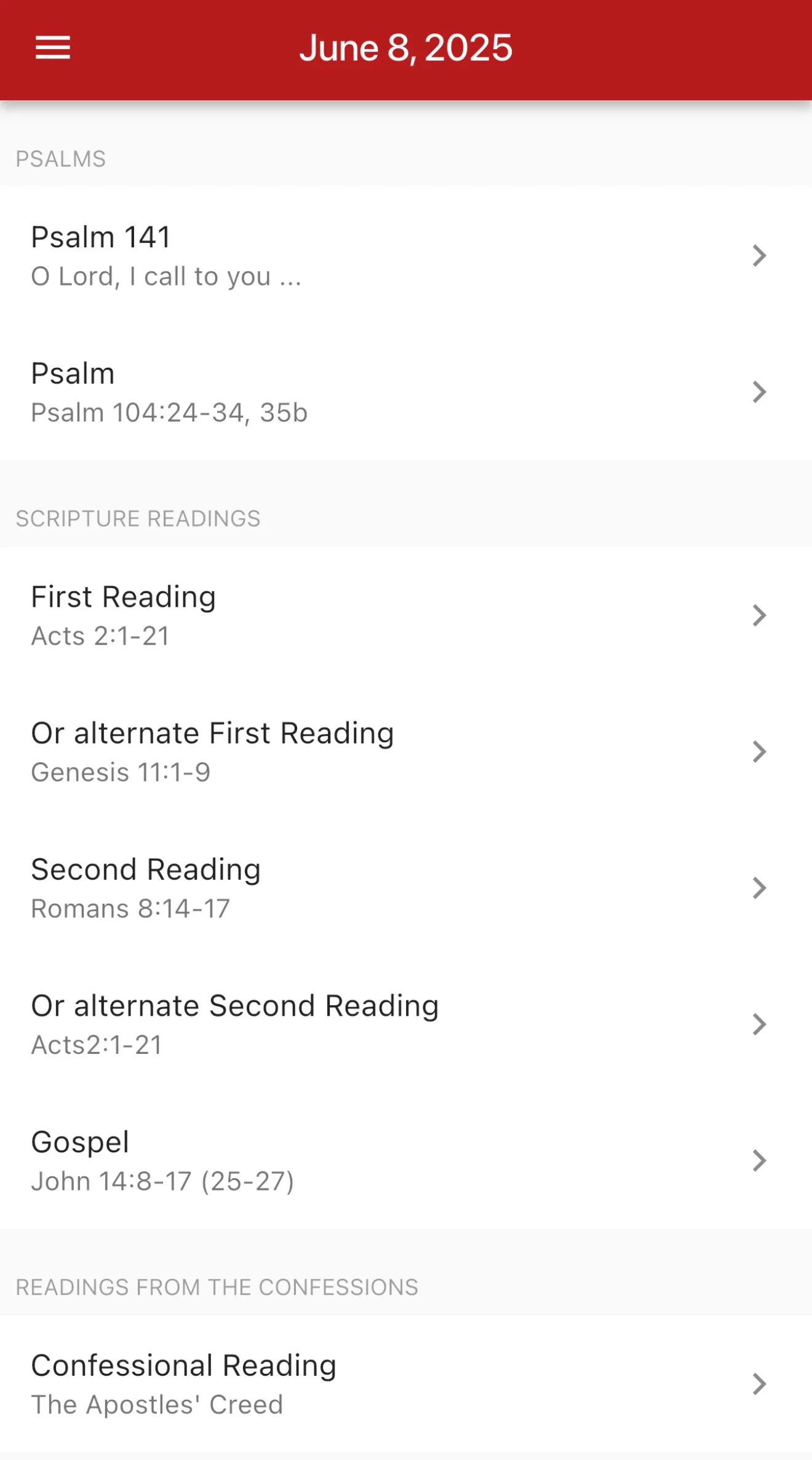Liturgical History: Four readings each Sunday is normal
The Presbyterian Glory to God Hymnal offers guidance on the use of multiple readings for Sunday worship services. Photo: Gerald Farinas.
At Union Presbyterian Church in Fort Madison, Iowa, the Rev. John Allen Bankson leads worship in a way that would have been more familiar to Presbyterians in the centuries after the Reformation.
Each Sunday, his congregation hears four different Scripture readings: one from the Old Testament, a Psalm, one from the New Testament letters (called the Epistles), and one from the Gospels.
This form of Order of Worship is found in the Book of Common Worship of the Presbyterian Church (USA).
It’s a pattern younger Presbyterians might find strange—but it’s actually the original way Presbyterians used to read the Bible in worship.
Rev. Bankson says they’re just doing what Presbyterians had been doing for centuries—to hear the whole story of God from creation to Christ.
What did Calvin and Knox do?
John Calvin, the Reformer from Geneva, and John Knox, who brought Calvin’s ideas to Scotland, both believed worship should be filled with Scripture.
In their services, there were four readings.
Old Testament: To remind the people of God’s covenant and promises.
Psalm: Often sung or chanted by the people. Or read aloud as a call and response.
Epistle: One of the letters written by apostles like Paul.
Gospel: The stories of Jesus’ life and teachings.
This way of reading Scripture made sure people didn’t just hear one part of the Bible over and over. They heard God’s Word as a whole story.
Calvin even practiced lectio continua, meaning he preached through books of the Bible, chapter by chapter, without skipping around.
As one scholar puts it, “The reading and preaching of Scripture was central to Reformed worship from the very beginning” (Hughes Oliphant Old, Worship: Reformed According to Scripture, 2002).
When did things change?
During the Great Awakening in the American frontier period, things got simpler especially for the Baptist and Methodist leaders out on their missions.
Some did it out of necessity. Many churches and mission plants didn’t have trained ministers.
Services were shorter.
People wanted preaching that focused deeply on just one Bible passage.
So many of those gatherings, sometimes called revivals, dropped the multiple readings and instead read only the one passage that the preacher would talk about in the sermon.
By the late 1800s, this became common in the American Church—finding its way into Presbyterian congregations.
Some believed this helped people understand the Bible better.
Others felt it was more efficient.
But it also meant that many parts of Scripture were never heard in worship.
Rev. Bankson says of this period that the Church lost something in that shift.
“When we only read what the pastor is preaching on, we miss the wide range of God’s voice.”
A return to the full meal
In the 1990s, many churches—including the Presbyterian Church (USA)—adopted something called the Revised Common Lectionary.
It is in common use by Presbyterian, Lutheran, Episcopalian, Methodist, and other mainline Protestant churches. It also has commonalities with the Roman Catholic Lectionary.
It brought back the four readings: Old Testament, Psalm, Epistle, and Gospel.
The idea was to return to the old rhythm Calvin and Knox used, while giving pastors and congregations a three-year plan to hear Scripture from all over the Bible.
The Presbyterian Mission Agency explains that using the Revised Common Lectionary connects worshipers “with the seasons of the Christian year” and helps the whole church “hear a wide range of Scripture readings” (PCUSA.org).
Today, more churches are using the full lectionary each Sunday—just as in Fort Madison. While others still haven’t made the change because it’s so hard to convince Session to accept change.
Rev. Bankson enjoys hearing his congregants make connections between the readings themselves—even if the connections aren’t mentioned in the Sermon. They hear the Gospel echoed in the Old Testament. They feel like they’re getting a full meal every Sunday.
And perhaps that’s what Calvin and Knox hoped for all along—not a quick snack of Scripture, but a true feast of God’s Word.
How to incorporate all four Scripture passages
When the full Lectionary is used in Sunday worship, it is an opportunity for more people to be involved in worship.
Lay persons could take turns presenting the First and Second Readings. Psalms can be set to music (as found in the Glory to God Hymnal) or can be led as a call and response reading.
The Gospel should always be read by the Teaching Elder followed by their sermon.
Sermons don’t have to touch on all the readings. It can still focus on just one.
Sources
Hughes Oliphant Old, Worship: Reformed According to Scripture, 2002.
Presbyterian Mission Agency. “Revised Common Lectionary.” www.presbyterianmission.org
John Knox, Book of Common Order, 1560.
John Calvin, Form of Church Prayers, 1542.
The Presbyterian Daily Prayer app provides the readings for each day and each Sunday—a first reading, psalm, second reading, and Gospel. Screenshot: Gerald Farinas.

